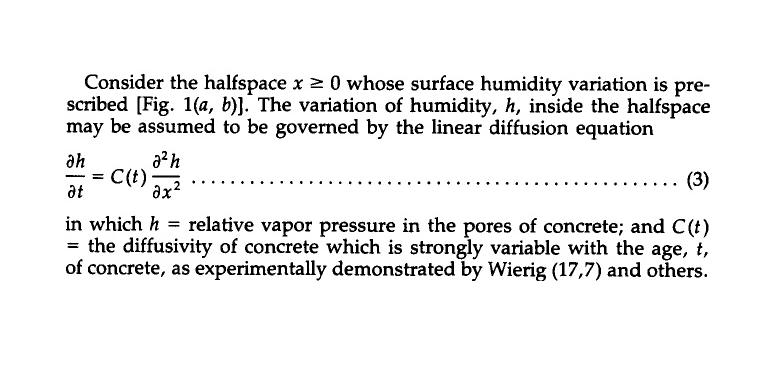I was hoping someone that is much more skilled at math than I could help me interpret the attached equation. Basically, I am trying to understand how humidity will vary through a cross-section of concrete. I understand concrete diffusivity 'C' will degrade with time and may be represented in units of mm^2/day.
So if I am able to choose 'C' based on some time 't', what does the variation of 'h' across 'x' look like? Do the squared terms mean 'h' varies as a square of 'x'?
So if I am able to choose 'C' based on some time 't', what does the variation of 'h' across 'x' look like? Do the squared terms mean 'h' varies as a square of 'x'?

